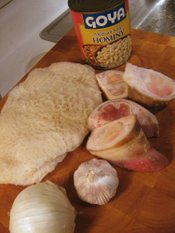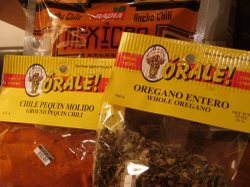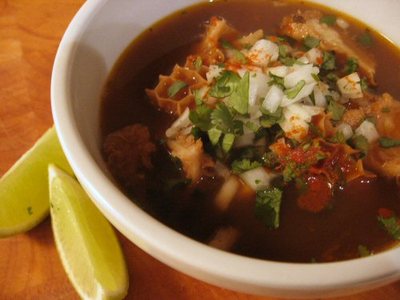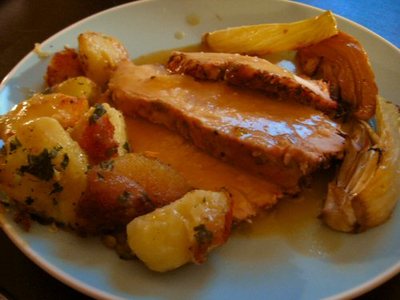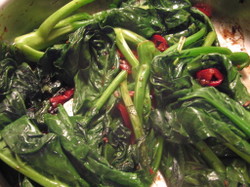Sunday Night Special: Quick-Fried Lamb & Pounded Eggplants with Green Peppers
Ok, I didn’t make this dinner until Tuesday and it’s now Thursday, but it was intended for Sunday night. And isn’t Sunday night really just a state of mind anyway? This weekend I got waylaid by a late lunch/early dinner at Sripraphai and it seemed silly to cook Chinese food just a few hours later.
The goal was to use at least part of a boneless lamb roast that we bought on a whim from Costco. Having no desire for a traditional British preparation (it’s hard not to think of the U.K. or Australia), Indian food seemed logical. Then I thought of Northern Chinese dishes using chiles, cumin and cilantro. That was definitely it.
There was only one such recipe in The Revolutionary Chinese Cookbook, quick fried lamb but it didn’t contain cumin. Beef with cumin, did, however. Because I’m a rule follower, I essentially used the lamb recipe and just added the earthy spice in the middle. I didn’t have angelica root and I’m not sure how it tastes exactly. Well, I’m not totally a rule follower because I persist in reprinting copyrighted recipes. I swear, I’ll stop soon.
Because I never learn from past mistakes, I kind of mangled this dish by overcrowding the wok. I’d envisioned these perfectly seared, spicy, oil-coated slices of meat and I ended up with boiled mutton. Well, practically. Too much meat produced too much liquid and my version became soupy and a little tough. Next time I’ll be more careful and make it spicier.
Quick-Fried Lamb
Xiao Chao Yang Rou
Ingredients
10 ounces lean boneless lamb
1 tablespoon Shaoxing wine
1 teaspoon light soy sauce
½ teaspoon dark soy sauce
¼ teaspoon salt, plus extra to taste
2 teaspoons cumin
2 fresh red chiles or ½ red pepper
2 ½ ounces cilantro or Chinese celery
2 teaspoons finely chopped fresh ginger
2 teaspoons finely chopped garlic
2 teaspoons dried chile flakes (optional)
1 tablespoon finely chopped Chinese angelica root (optional)
1 teaspoon sesame oil
3 tablespoons peanut oil for cooking
1. Cut the lamb across the grain into thin slices. Place the slices in a bowl, add the Shaoxing wine, soy sauces, and salt and mix well; set aside.
2. Cut the red chiles into thin slices; if using bell pepper, cut into small squares. Cut the cilantro stems or celery into 2-inch pieces, reserve some leaves for a garnish and set aside the other leaves for other uses.
3. Heat the wok over a high flame until smoke rises, then add the peanut oil and swirl around. Add the ginger, garlic, fresh chile or bell pepper, chile flakes, cumin and angelica root, if using, and stir-fry briefly until fragrant.
4. Add the lamb and continue stir-frying, adding salt to taste, if necessary. When the lamb is almost cooked, add the cilantro or celery, and stir a few times until barely cooked. Turn off the heat, stir in the sesame oil and serve, with cilantro leaf garnish, if desired.
I scoured the same cookbook for a quick vegetable dish that didn’t contain any hard to find ingredients. Sadly, that meant no Chinese chives, black beans, lotus root, purple perilla, fava beans, duck eggs or bamboo shoots. I landed on a recipe that used eggplant, green pepper and soy sauce, simple as that. Eggplant does tend to require an unseemly amount of oil to get silky. I skimped a bit, but either way the dish was nowhere near greasy and nothing like you’d get from take-out joint. I was tempted to substitute red peppers because green ones are low on my list of favorites, but the dry wok cooking managed to sweeten them up.
Pounded Eggplants with Green Peppers
Qing Jiao Lei Qie Zi
Ingredients
1 pound eggplants (preferably Chinese)
salt
5 ounces green bell peppers, thin-skinned if possible
light soy sauce
4 tablespoons peanut oil for cooking
1. Peel the eggplants and slice thickly. Sprinkle with salt, toss to coat evenly, and then set aside for 30 minutes
2. Meanwhile, cut the pepper in half, discard the seeds and stem and thinly slice; set aside.
3. When the eggplants are ready, rinse them to get rid of excess salt, and shake dry; set aside.
4. Stir-fry the peppers in a dry wok over a medium flame until soft and fragrant, pressing them against the sides of the wok; set aside.
5. Heat the oil in a wok over a medium flame. Add the eggplants and stir-fry for a good 10 minutes or so, until they are very tender but not colored. As they soften, mash them up with a wok scoop, until you have a sludgy paste that is about half the volume of the original eggplant slices.
6. Add the bell peppers and stir-fry until both ingredients are fragrant and well-mixed, seasoning with a little soy sauce to taste. Serve.
Recipes from “The Revolutionary Chinese Cookbook” by Fuchsia Dunlop. W.W. Norton & Company, 2007.


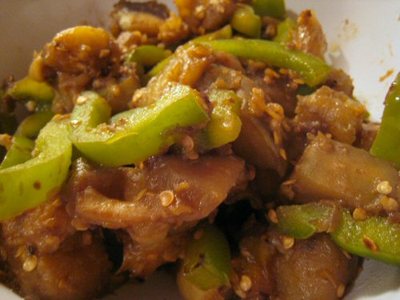
 Follow
Follow

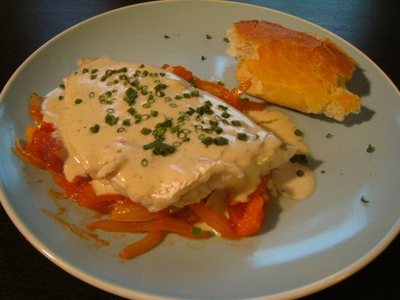
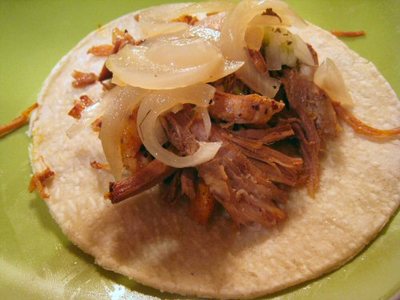
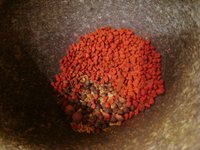

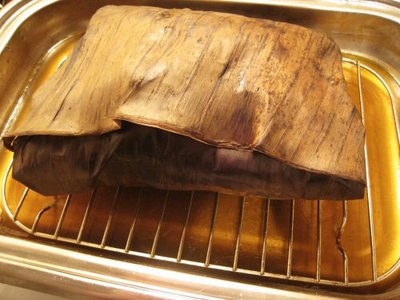
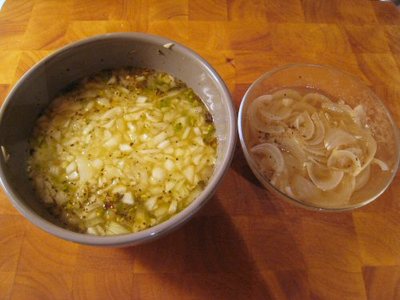
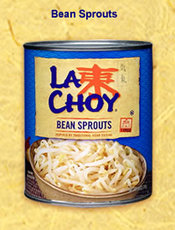

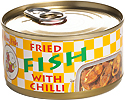 As an earlier lazy snack, I peeled open a tin can of fried fish with chile and consumed it simply with a small bowl of rice. It’s possibly the equivalent of canned sardines with crackers. A cheap treat with crunchy, edible bones but sweet and spicy. The only thing is that the cartoon
As an earlier lazy snack, I peeled open a tin can of fried fish with chile and consumed it simply with a small bowl of rice. It’s possibly the equivalent of canned sardines with crackers. A cheap treat with crunchy, edible bones but sweet and spicy. The only thing is that the cartoon 
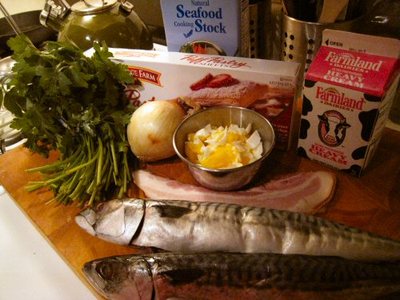
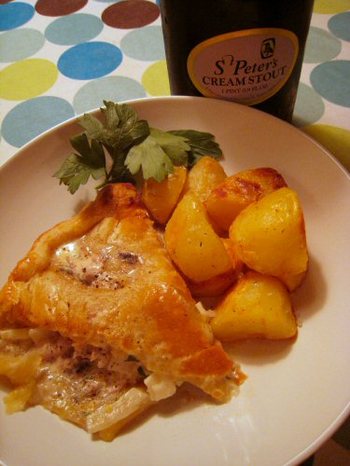

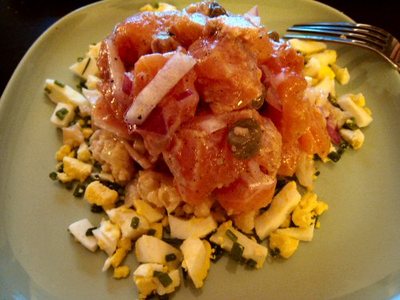

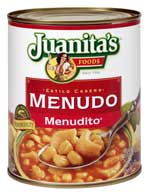 Episodes that only occurred a couple times in childhood often multiply in the mind years later. My dad likely bought a big can of
Episodes that only occurred a couple times in childhood often multiply in the mind years later. My dad likely bought a big can of 